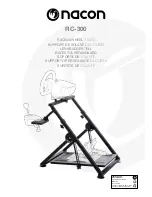
Data update counter (Index 4482)
The data update counter in Index 4482 can be used to see whether the indication
values have been updated. This counter is incremented by one each time new vibration
data is available in the time and frequency ranges. All influencing factors are taken into
account and the counter is only increased if new values are available in the indices. If,
for example, 5 blocks are taken into account for averaging, the data update counter is
only incremented after 5 blocks and the corresponding processing time.
Signal axis and axis mode (Index 4477, Subindex 1 and 3)
The Multi Physics Box also displays values in the frequency range (
) through a
Fast Fourier
transformation. This is calculated on
the vibration data of the signal axis selected via Subindex 3. If information of all 3 axes
is required, this can be implemented via the magnitude of the axes.
Magnitude =
If only one of the three axes is relevant for vibration monitoring, the sensor can be set
to single-axis operation via Subindex 1. In this case, all indication values are output
only for the axis selected in Subindex 3 (the values on the other axes are ’0’).
NOTE
The maximum block length of 1,280 ms can only be used in single-axis mode.
Signal type (Index 4477, Subindex 4)
The indication values can be calculated based on speed or acceleration values. This
selection is valid for the time range and the frequency range.
Indication values calculated based on speed weight low frequencies more heavily.
Indication values based on acceleration, on the other hand, weight higher frequencies
more heavily.
Phenomena that primarily cause vibration at frequencies up to 1,000 Hz can be bet‐
ter observed with speed-based indication values. Acceleration-based indication values
should be used to detect phenomena that primarily cause higher-frequency vibrations.
Some examples are listed in
Table 4: Vibration speed and acceleration
Signal type
Essential fre‐
quency range
Physical influence
Application
Speed
10 ... 1,000 Hz
Kinetic energy and
inertia
Unbalance
Misalignment
Relaxation
Acceleration
Up to 3,200 Hz
Dynamics and shock
forces
Mechanical wear, ball bear‐
ing damage
It should be noted that the speed-based indication values also heavily weight the
low-frequency noise. To obtain stable measured values when using this signal type,
the lower limit of the considered frequency range (Index 4478) should therefore be set
as high as possible. The minimum value for this limit is 10 Hz with a block length of
640 ms and is set automatically when changing to the Speed signal type. The minimum
values for this limit for the other block lengths are shown in
.
4
PRODUCT DESCRIPTION
14
O P E R A T I N G I N S T R U C T I O N S | MPB10
8028041/2022-08-16 | SICK
Subject to change without notice















































